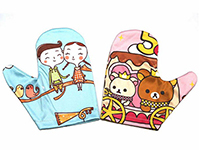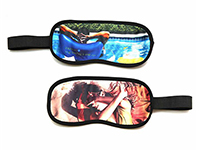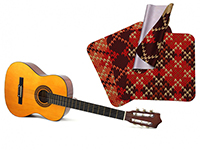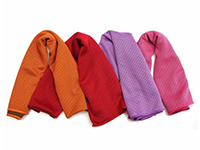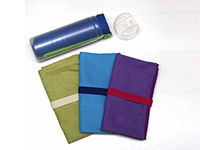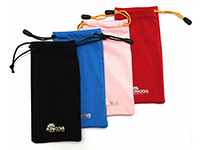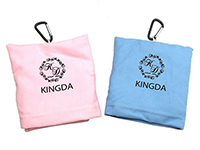- Home
- Microfiber Fabric
- Material of microfiber fabric we use
- Microfiber Fabric
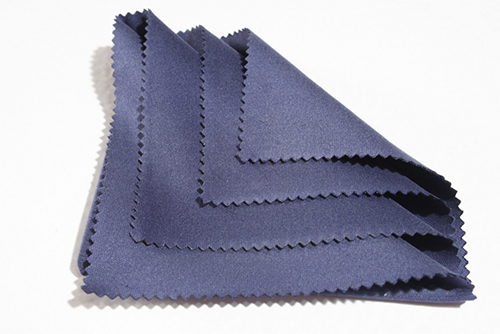
In order to confirm the quality of microfiber products, Kingda only purchases AA grade raw silk from the listed company Shenghong Fiber to ensure the quality of finished products after dyeing and finishing at the source.
Production Principles
Since microfiber is very fine, a single fiber is easily broken while producing and hard to be made into fabric. Thus, we deal with the microfiber like this:
- First combine the acid-resistant but not alkali-resistant polyester with the alkali-resistant but not acid-resistant nylon to form a quantity of composite filaments;
- Deal these filaments with sodium hydroxide. Because of the totally opposite properties for acid and alkali of nylon and polyester, the polyester will be dissolved while the nylon will not, which will cause a wedge-shaped gap at the contact of two fibers.
Finally, the filament will be divided into 16 monofilaments, the fineness of which can reach 0.168tex and become microfiber.
Common Types
Because of the higher price of nylon, the proportion of nylon and polyester in microfiber will be different according to industries demands.
Generally, the industries such as IT and optics adopt 70% polyester + 30% nylon to make microfiber; while as to the civil industries, they use 80% polyester + 20% nylon or 90% polyester + 10% nylon.
The earliest textile fibers used by people were natural fibers - cotton, hemp, wool, silk, among which, silk is one of the best wearing fibers and its linear density is about 1.0dtex. The originally developed chemical fibers could only reach a linear density of 5-6dtex and failed to provide the wearable comfort or beautiful appearance of silk.
Read More- Good Cleaning Effect
- Strong Water-absorbing
- Quick drying
- Soft and Comfortable
- Easy Cleaning
- Long Service Life
In order to confirm the quality of microfiber products, Kingda only purchases AA grade raw silk from the listed company Shenghong Fiber to ensure the finished products’ quality after dyeing and finishing at the source.
We always use the quality raw materials, and are equipped with complete equipment sets such as circular loom machine, dyeing machine, stenter machine and textile finishing machine to achieve the quality standards.
Read MoreKingda was established in 2004, with a factory area of 5000 m² and more than 80 staffs nowadays. Kingda produces 10 million sports towels, eyeglasses cleaning cloth and other products, and 1 million packing bags.

